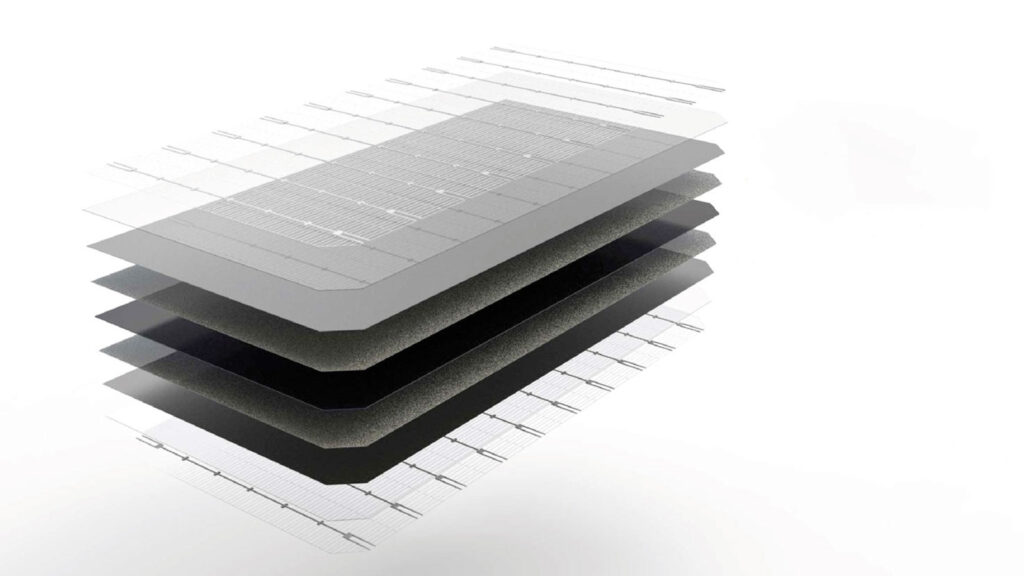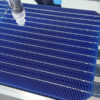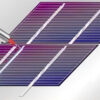In our ongoing search for renewable energy, a lot of people opt to use solar power as a sustainable energy source. Over time, solar panels have become more effective and affordable. A new technology called HJT (Heterojunction) is getting a lot of attention.
HJT solar panels are a hybrid of modern manufacturing processes and conventional silicon solar panels. Better performance and energy production result from this combination. We will now give you a thorough introduction to this cutting-edge technology.
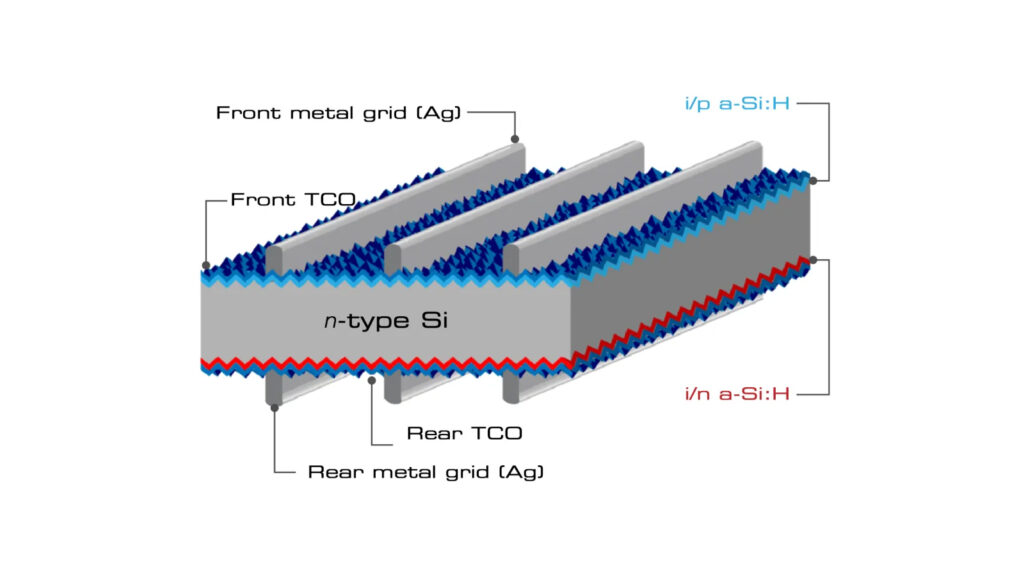
HJT solar panels: what are they?
Three layers of photovoltaic materials make up the HJT solar panel. Both crystalline silicon and amorphous “thin-film” silicon are used in the panels. To create electricity, these technologies combine.
Crystalline silicon (c-Si), amorphous silicon (a-Si), and indium tin oxide (ITO) are the main components of HJT solar panels.
Before sunlight reaches the crystalline layer, it is captured by the first layer of amorphous silicon. Any light that reflects off the layers below is also captured. The primary function of the middle layer, which is made of single-crystal silicon, is to convert the majority of sunlight into electricity.
Behind the crystalline silicon is the final layer, which is another amorphous thin-film silicon layer. Any photons that made it past the first two layers are caught in this layer.
Performance is improved by the layer of amorphous silicon in HJT solar panels. Defects and electron recombination, which are frequent problems with conventional solar panels, are reduced. By serving as a passivation layer, this is accomplished. Additionally, the crystalline silicon layer aids in the efficient transfer of charges, which facilitates the movement of electrons within the battery’s structure.
Why choose solar panels with HJT technology?
1. High conversion efficiency:
The homojunction cell type used in PERC technology uses crystalline silicon for the PN junction. Compared to conventional crystalline silicon solar cells using PERC technology, HJT solar panels are unique. HJT is a junction composed of two unique semiconductor substances.
It functions similarly to conventional solar cells, but the HJT cell is more effective at converting sunlight into electricity thanks to a thin layer of amorphous silicon.Currently, the average PERC efficiency of many PV manufacturers is over 22%, and the average HJT efficiency is over 22.5%.
In addition, HJT solar cells are made to have a module bifaciality of over 93%, which means they can produce electricity from both sides of the module. For instance, the Swiss company Ecosolifer has created a commercial bifacial HJT solar cell with a 24.1% efficiency.
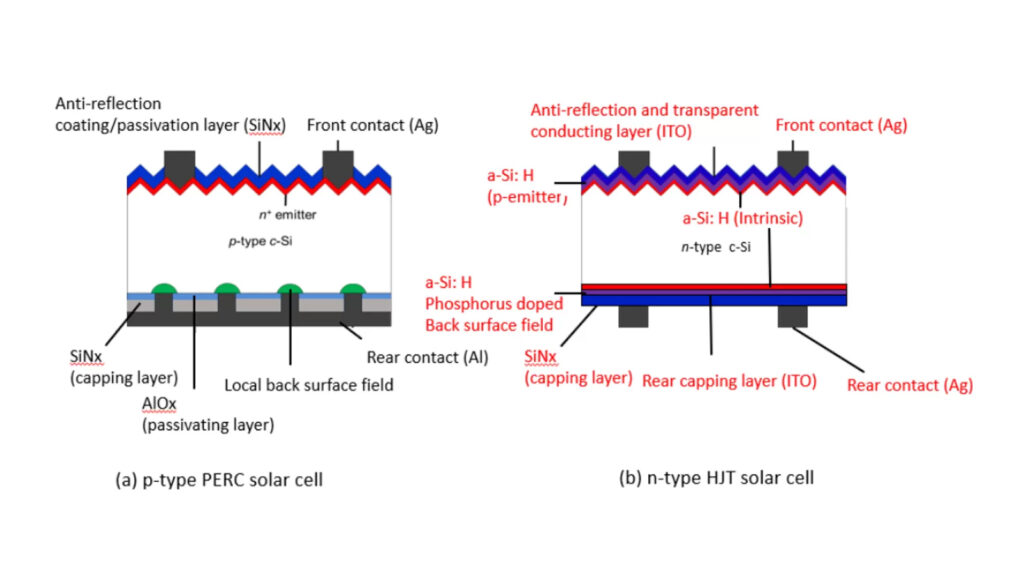
2.Low temperature coefficient:
Compared to conventional crystalline silicon cells, thin-film solar energy produced by HJT solar panels has a lower temperature coefficient. At temperatures below 200 °C, HJT solar panels have an efficiency of over 23%.
Additionally, they have a low temperature coefficient of -0.2%/K, which boosts the efficiency and output of photovoltaic systems while lowering their cost.
This indicates that HJT solar panels can function effectively even in warm environments, enabling them to generate more energy in hotter environments. As a result, large-scale power generation using these high-performance cells is made possible.
3. Fewer production steps:
HJT solar panels are produced with fewer process stages than conventional solar panels made with PERC technology, which facilitates a smoother production process. HJT solar panels require only 8 processes for the production of solar photovoltaic modules as opposed to the roughly 13 processes needed by PERC technology. As a result, it is becoming more financially feasible, which is encouraging for the development of solar energy. This is because the price of the required equipment is continuing to drop.
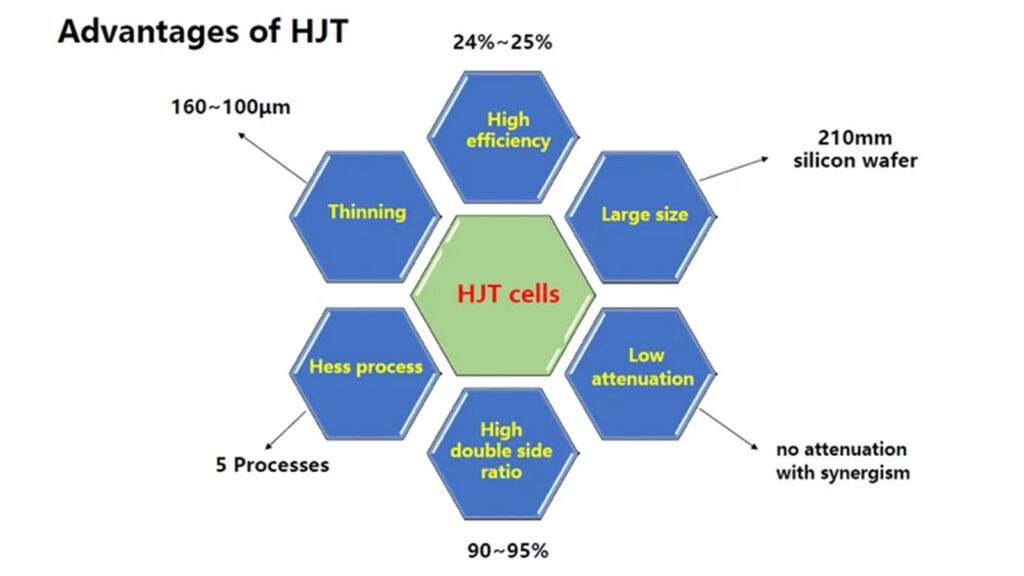
4. Long service life:
HJT solar panels are renowned for their toughness, which means they last longer and require less upkeep, which lowers costs. The typical lifespan of solar panels is 25 years. However, under normal circumstances, HJT solar panels can last up to 30 years.
This is due to the protective barrier function of the amorphous silicon layer, which slows degradation and prevents the emergence of the PID effect. HJT batteries have a longer life as a result.
Maysun Solar is committed to providing distinctive, excellent, and reasonably priced solar modules to customers in Europe. The product uses a number of different technologies, including PERC, IBC, shingling, double-sided, half-cut, etc.
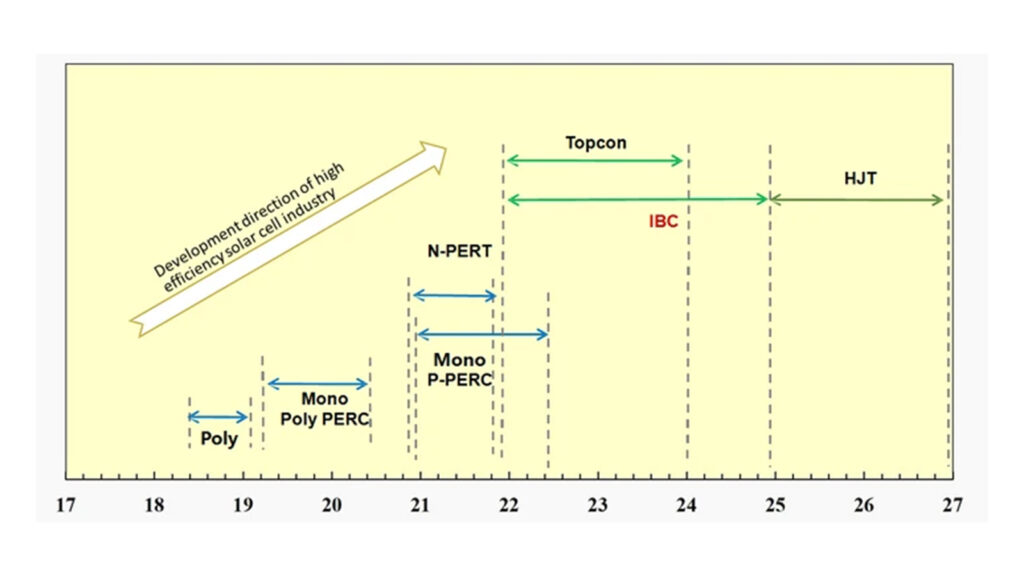
What is the HJT technology’s development trend?
The market’s most well-liked and desirable solar cell technology is PERC technology. It is regarded as the least complicated option because upgrading the production line only necessitates the addition of new machinery. The production of HJT solar panels, however, necessitates the acquisition of an entirely different set of production tools.
When it comes to solar cell development, HJT solar panels are far more effective and sophisticated than solar panels using PERC technology. Because of the high power generation efficiency of HJT solar panels, cell manufacturers and suppliers are becoming more and more interested in them. The future market will determine customer preferences, which will be a major factor in the development of HJT solar panels.
The solar industry is undergoing a revolution thanks to HJT (Heterojunction) technology, which increases energy output while also improving efficiency. To get around the drawbacks of conventional solar panels, HJT solar panels combine amorphous and crystalline silicon layers. This makes a variety of solar energy applications possible.
Since 2008, Maysun Solar has been manufacturing superior solar panels. We provide a range of solar panels with various features, such as double glass, full black, and shingled. In addition, Maysun will soon start making HJT solar panels. These panels are extremely effective and have a modern design that fits in with any building.
Maysun Solar has set up offices and warehouses in multiple countries. They have also formed long-term partnerships with outstanding installers. If you have any questions about the latest solar panel quotes or anything related to PV, please don’t hesitate to reach out to us.

Will Agrivoltaics Affect Crop Growth?
Agrivoltaics combines solar energy and agriculture to reduce up to 700 tons of CO₂ per MW, improve water use, and boost crop growth for sustainable farming.

6.5 Billion Loss Hits Photovoltaics: Reshaping or Elimination?
In 2025, the photovoltaic market may see a turnaround as some companies take early action. A €6.5 billion loss is driving businesses to explore new growth areas like energy storage and hydrogen. Which giants will break through? Industry transformation is accelerating!

What’s New in Solar Energy (March 2025)
March’s solar news highlights include rooftop solar meeting two-thirds of global demand, China’s market reforms potentially boosting solar demand and module prices, France revising solar targets in PPE 3, and challenges in Europe with declining capture rates and price volatility.
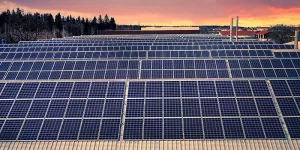
Zero-Investment Solar Projects: How to Earn Passive Income Through Rooftop Leasing?
Monetize your idle rooftop and earn stable annual rent! With the photovoltaic rooftop leasing model, businesses can generate long-term revenue without investment, reduce operating costs, and achieve a green transition.

How to Optimize Photovoltaic Power Plant Operations with AI and Big Data
This article explores three methods of using AI to enhance power generation revenue and reduce operation and maintenance costs in intelligent photovoltaic operations.

Solar Module Costs May Rise by 10% in 2026! In-Depth Analysis of CBAM’s Impact on the Industry
Table of Contents Introduction to CBAM 1. Why Did the EU Introduce CBAM? As the challenges posed by global climate change intensify, governments worldwide are accelerating their efforts to achieve carbon neutrality. The European Union, a leader in global carbon reduction initiatives, introduced

